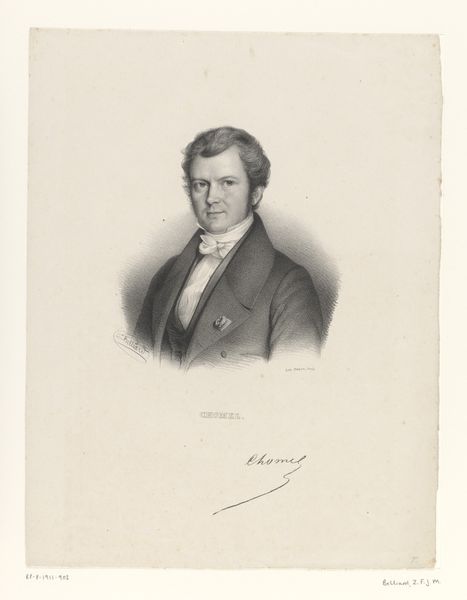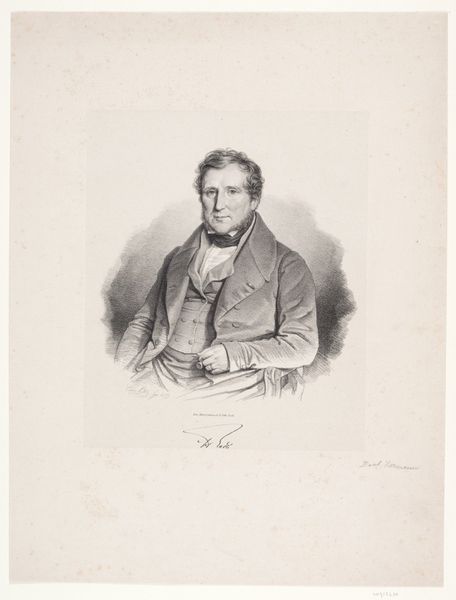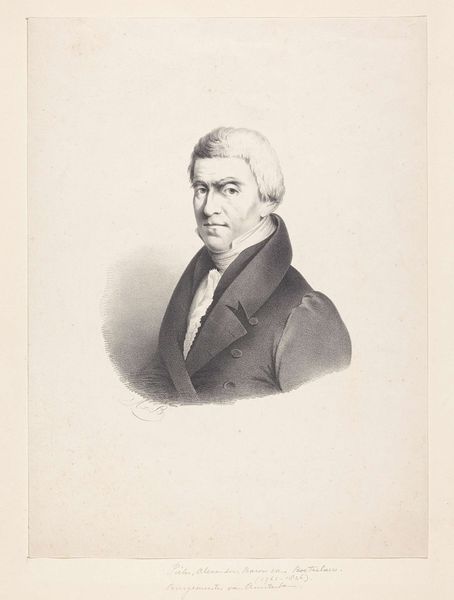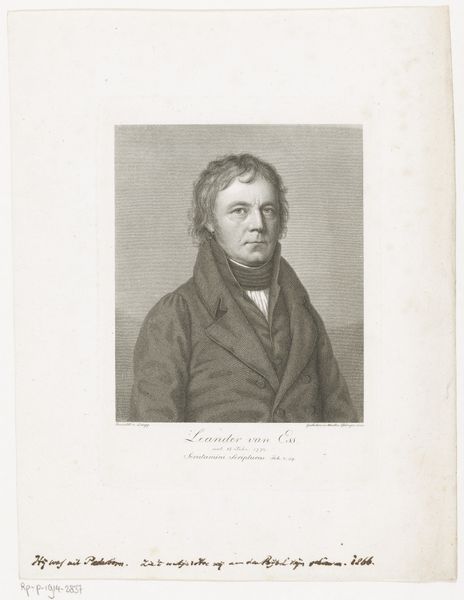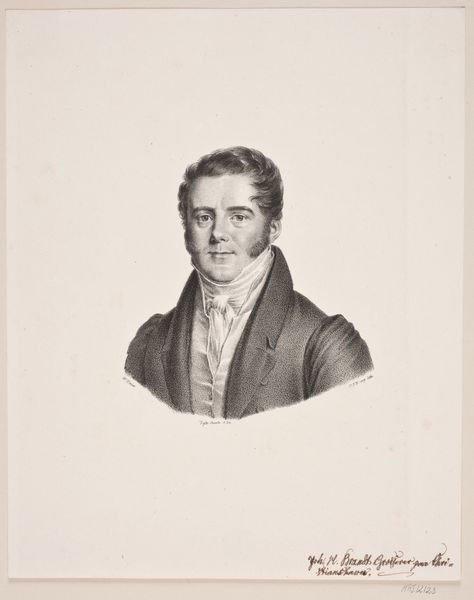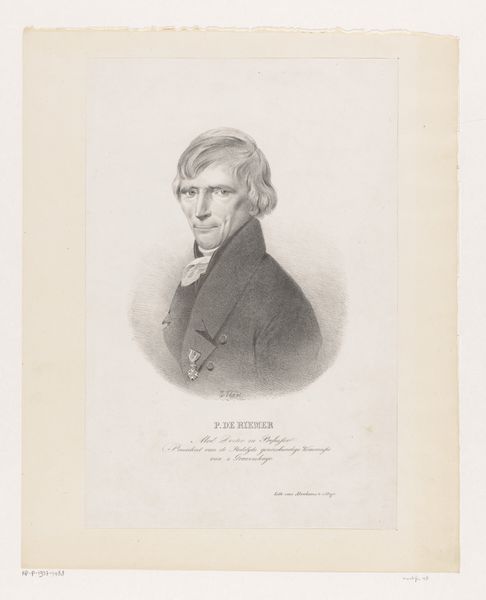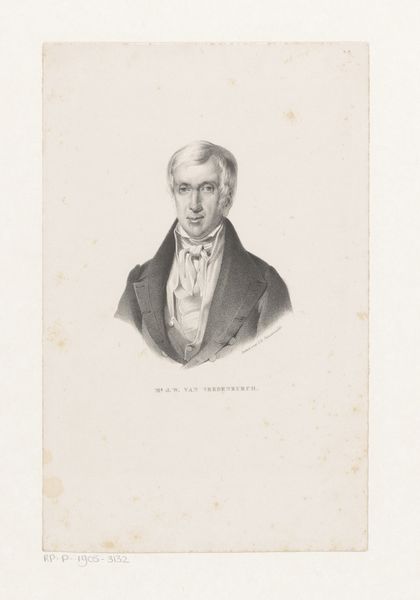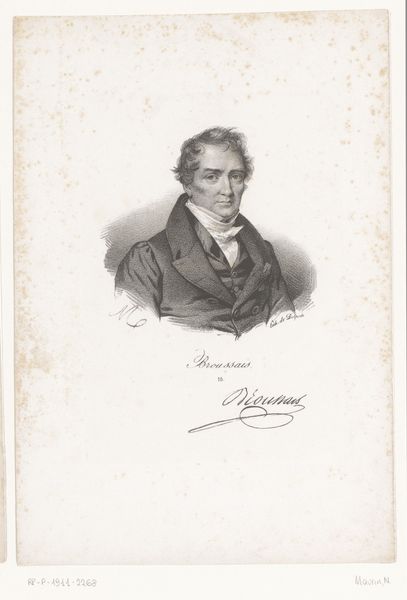
drawing, pencil
#
portrait
#
pencil drawn
#
drawing
#
neoclacissism
#
pencil sketch
#
pencil
#
academic-art
#
realism
Dimensions: height 313 mm, width 231 mm
Copyright: Rijks Museum: Open Domain
Curator: This drawing is a portrait of Julien Joseph Ducorron, made in 1822 by Guillaume Philidor Van den Burggraaff. It's rendered in pencil. Editor: There’s something very direct and sober about it. The almost complete absence of colour adds a seriousness and almost forces you to focus on the subject’s expression. Curator: That seriousness certainly connects to the period, with the emphasis on realism and accurate representation that you see within academic art and neoclassicism. Notice the artist's sharp and precise strokes which lend themselves to capturing the sitter's likeness with clarity. Editor: How was such a drawing viewed, back in the day? Was it solely within the sphere of the academy, or would this also be considered something of value outside of it? Curator: Portraits like this would have circulated among a certain educated and affluent social class. Printmaking allowed for the wider distribution of such images. Consider the labour involved in making such an image at this time too, and the social meaning that making a portrait bestowed to the subject portrayed and, naturally, to the artist that drew it. Editor: So its availability would create and reinforce power dynamics, depicting and preserving social hierarchies? Curator: Exactly. It becomes part of a visual language used to communicate status. But what interests me equally is how it makes us reassess contemporary image production and dissemination: What kind of labour do we consider artistic today, and what are its value systems? Editor: Absolutely. Seeing a piece like this, we can't help but think about portraiture as a status marker throughout history and in the age of the internet, and the democratization – or perhaps commercialization – of self-representation in the current times. Curator: It invites the re-examination of how meaning and class is attached to image-making practices and artistic expression. Editor: Indeed, it is interesting how such a piece opens our eyes to the past but makes us reflect critically about image-making and its meaning in today's society.
Comments
No comments
Be the first to comment and join the conversation on the ultimate creative platform.
